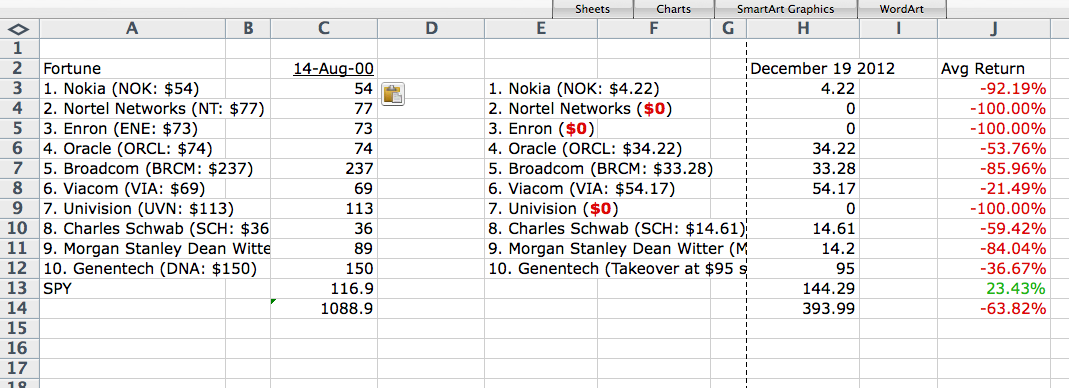Fortune Magazine Is Wrong Why Stocks Are Cheap Now
Post on: 10 Июнь, 2015 No Comment

About
Based on a theory that when price/earnings ratios rise above a specific level, stocks must fall, Fortune argues that the next crash of 1987 is right around the corner. But the magazine’s analysis ignores two important variables in valuing stocks: how fast corporate earnings are growing, and investors’ next best alternative to stocks. And based on those measures, stocks are cheap.
Fortune bases its analysis on the work of Yale professor Robert Shiller, who argues that stocks are reasonably valued when they are at a 10-year inflation adjusted average P/E of 13.3 and their dividend yield (dividends/stock price) is 4% — Shiller’s 60-year average. Prior to the 1987 stock market crash, which sent stocks down 22.6% — the equivalent of 2,400 in today’s Dow points — Shiller’s P/E was 18.3 and the dividend yield was 2.6%. Post-crash, that P/E dropped to 13.3 — a bit below Shiller’s golden mean. Now Fortune argues that the S&P 500 is trading at an even higher P/E, 22, and lower dividend yield, 1.8%, than it was before the 1987 crash, and that another crash is therefore inevitable.
But what evidence is there of a correlation between P/Es and future stock prices? According to money manager Gary Byrne. there isn’t any. His work finds that over an 80-year period, there has been no relationship between movements in the Dow 30 Stock average and P/E ratios. Byrne offers some interesting examples to demonstrate this. For example, in 1933 the Dow’s P/E was 52, but it rose 17% in 1934. And in 1981, the Dow was selling at a meager P/E of 8, which by Shiller’s theory would indicate stocks were set to rise — but instead, the Dow fell 6% in 1982.
For a Forward-Looking Indicator, Use PEG
Byrne’s theory is that P/E ratios tell you about the past, not about the future. And he argues that what really matters is whether stocks’ future earnings streams are growing faster than the prevailing interest rates, which reflect the relatively low-risk alternative place for investors to put their money. This makes sense to me since I believe that a stock price should reflect the value in today’s dollars of its future stream of earnings.
But Fortune ‘s analysis fails to take these factors into account. One way to account for such earnings growth is to look at the P/E ratio and compare it to the rate at which earnings are forecast to grow, the so-called Price/Earnings to Growth (PEG) ratio. When the PEG is less than 1, stocks are reasonably valued. On that basis, with S&P 500 earnings forecast to grow 28.3% in 2010 and 20.5% in 2011 and trading at a P/E of 23.5, stocks are cheap at a PEG of 0.83.
There’s another factor to consider. With no inflation, April’s producer price index fell 0.1%. That means that the alternative to a stock investment for the average investor — a money market fund or bank account — is likely to continue to yield next to nothing. While stocks have certainly been volatile over the last few weeks, corporate earnings growth is likely to be far higher than those negligible interest rates.
My guess is that until stocks’ P/E ratios exceed forecast earnings growth or the Fed starts raising interest rates to dampen what is now non-existent inflation, more of the nearly $3 trillion currently stashed in money market funds will find its way into equities. And this should boost stock prices.














